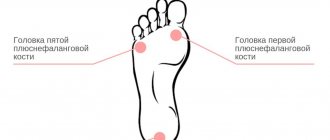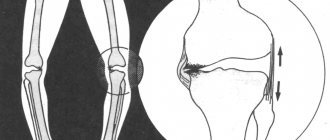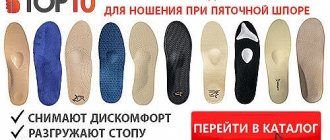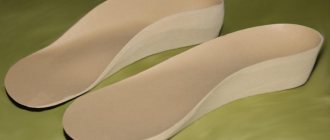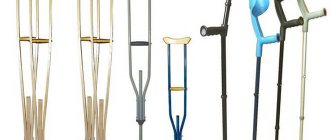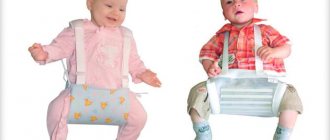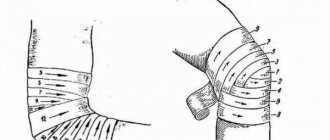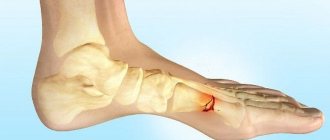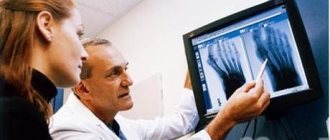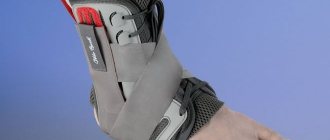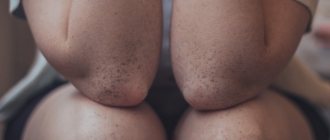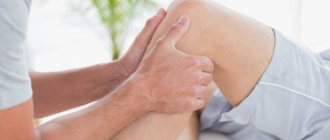The shock-absorbing properties of the foot are reduced due to various injuries, high physical activity, and diseases of the musculoskeletal system. This entails overload of the upper joints (knee and hip), and also gradually leads to curvature of the spine. Over time, internal organs begin to suffer. Such nuances ultimately require you to think about how to choose the right orthopedic insoles.
Classification
If a person experiences persistent or recurrent painful sensations, it is recommended to change their usual shoe inserts to specialized ones. The variability of these is determined based on the specifics of different situations. The appropriate type is determined taking into account the symptoms or the identified stage of the onset of the disease. You should be extremely careful when choosing. Depending on the variety, product pricing is also determined. However, customer-oriented sellers, while selling quality products, still focus on the buyer’s solvency. An example is the company OrtoPanda.
Preventive
If no problems as such are found, then such orthopedic insoles will have functionality that supports the arches so that excessive flattening of the foot is not observed. Nevertheless, no pronounced effect (drops and bends) is observed here. That is, the pelot and metatarsal roller do not protrude much above the surface and have minimal impact on the leg. However, the sensations from use still change. At first, the child may experience some discomfort.
An alternative to prevention is the use of additional rugs and other surfaces for walking on. Given general health, this measure may be sufficient. However, in the absence of time, it is recommended to buy a preventive orthosis. We should not forget that the problem under discussion is not only of an aesthetic nature, but also, in an advanced form, causes constant pain and deformation of the limbs, as well as a general change in the structure of the skeleton. Preventive orthopedic insoles for children (photos of which are in the article) can prevent these troubles.
Comfortable
Typically, orthoses are divided into therapeutic and prophylactic. If a person already has a disease, then he needs the first ones. In other cases, the second ones are also applicable. Of course, flat feet, valgus, and increased tone imply several degrees of manifestation, but these are already established diagnoses that need to be corrected as part of “treatment.”
Nevertheless, therapeutic variations can be divided into more rigid frame and soft ones. The choice will depend on the specific course of the disease. The modern market even offers examples used in dress and sports shoes. In their shape and structure, they are somewhat different from other options, since they can be shorter and thinner or cover the entire foot, but have the characteristic of being flexible. This allows you to create maximum comfort. Corrective insoles still perform their functionality due to neatly built-in small elevations.
Medicinal
A distinctive feature is a complicated design made of several layers. The more serious the stage of the disease, the tougher the frame will be. It is also characterized by the presence of obvious tubercles and depressions in the frame (metatarsal ridge and pelot). Such additions and curves maintain the arches in an anatomically correct position. These criteria allow you to provide the maximum possible support to the foot, as well as reduce pain. Fatigue when walking decreases here, but over time. At first you will have to endure a certain period of time, characterized by maximum inconvenience, but it will pass after complete adaptation.
Often the need for treatment arises here in relation to other problems accompanying the main illness. The baby may have bumps, finger deformities, and heel spurs. Such troubles can also be somewhat corrected with the help of the purchased product.
What is flat feet and what is its danger?
A healthy foot has two arches: longitudinal (along the outer edge) and transverse (under the toes). Thus, the support does not cover the entire area, which makes it possible to absorb and distribute the load when walking.
When the foot flattens, the arches lower or disappear, and the spring function decreases. In this case, both the bones, ligaments and joints of the feet themselves and the overlying parts (knee, hip joints, spine) are damaged. The result: arthritis, arthrosis, scoliosis, foot deformities and even varicose veins. In fact, flat feet are the basis of all subsequent deformities.
Flat feet can be congenital (very rarely, as a result of fetal malformations) or acquired. Acquired flat feet can develop as a result of injury (fractures) or disease (rickets, poliomyelitis, etc.). However, in 80% of cases it is static.
How to choose the right orthopedic insoles according to the markings
Based on the functionality of orthosoles and the location of corrective elements, they are marked according to the layout of values.
VP1 - have cups for heels and inlays for the internal longitudinal arch. Corrects the initial form of flattening, and also promotes the rehabilitation period in those who have undergone surgical interventions. Up to the amputation of one limb (they simplify the task for the second).
VP2 - here there is an increase in the characteristics described above. Recommended for the onset of hallux valgus deformity.
VP3 is a combined product with a heel socket and instep support, as well as a longitudinal pad. Pronation is provided in the anterior sector. Pronator insoles are prescribed for children and adults.
VP4 - a sizing near the thumb is added to the parameters of the previous version. This is necessary when the fingers are deformed inward.
VP5 - the ortho-inlay supports the heel part, the longitudinal arch and touches the anterior section. Supination is assumed in the back and front, and elevation in the arch area. In addition to a flat internal arch, pronation along the edge of the entire foot is prevented here.
VP6 - has different variations of execution. The main one supports the inner and outer sidewalls (supinates), in the middle of this tab there is a tubercle for unloading, and in the toe and heel there are indentations. The heel area is supplemented, if necessary, with an instep support or pronator. Recommended for a complex of problems with flattening, flattening, abduction of fingers, and the presence of lumps.
VP7 - here the foot pronates along its entire length, which requires correction. The best orthotics for children and even adults with clubfoot and varus.
VP8 - the previous version is supplemented with a spacer near the thumb if the patient is also found to have anterior adduction.
VP9 - designed for shortening the limbs (one of them), therefore, in addition to the heel socket and arch support, there is a specialized compensator descending from the heel to the fascicles.
VP10 - helps get rid of corns and calluses, so the main feature is the presence of indentations in the right places throughout the entire foot.
ADVANTAGES of manufacturing insoles at OrthoMed Classic
- Manufacturing of full-foot orthopedic insoles with full contact (complex foot orthosis).
- Computer 3D diagnostics of feet on a platform in statics and dynamics with an image on the screen of the distribution of load on the plantar surface of the foot in color and digital equivalent.
- Ideal price-quality ratio.
- Fitting an individually made insole to the patient’s shoes or prescribing anatomically correct shoes (2-4 cm heel, semi-rigid sole with a roll, fullness from 5 to 10, elastic inserts in the front section, removable standard insole).
- Impeccable correction of the forefoot, middle and rear foot.
- The use of measuring instruments to identify distortion of the pelvic bones and curvature of the spine; measurement of the length of the lower limbs with determination of the deviation of the heel bone.
- Wear resistance and durability of the OrthoMed classic insole.
- Use in the production of modern hypoallergenic composite materials of varying degrees of Shore density. When choosing covering materials, the condition of the soft tissues of the feet is taken into account (dryness or excessive sweating of the skin, trophic disorders), venous and lymphatic congestion, weight, physical activity, which increases the period of use of the insole.
Which orthopedic insoles to choose based on design
In most cases, this refers specifically to therapeutic orthotics, because it is their design features that have a lot of options. Depending on the area of overload and the identified problems with flattening, patients may require products with different functionality. To simplify their classification, they can be aimed at eliminating disorders located along or across the foot. Often patients experience a combination of complications.
Longitudinal
The materials used may vary, providing varying degrees of support and cushioning. Redistribution of the load is observed by adding a roller along the foot. It allows you to somewhat improve the shock-absorbing properties and relieve the skeleton in principle. Valgus and varus orthopedic insoles for children (photo in the article) work on the outer edge of the foot.
Transverse
Few people are aware of the problem that requires such insoles. Usually everyone presents additions (pelot) only along the orthosis from its inside. However, there is also an arch in the front of the leg, approximately in the middle. Typically, its flattening is typical for women after 30 years of age, but it also occurs in minors who wear uncomfortable fashion shoes. In this case, the foot is flattened. It has to be corrected using a metatarsal roller.
Combined
As a rule, the current question among the population is how to choose orthopedic insoles for a child to solve complex nuances. In this case, the orthosis will combine all the necessary characteristics along the longitudinal and transverse lines. Also, the final product can be supplemented with other inserts necessary to solve other problems.
Frame
These orthosoles should not be confused with specialized shoes. The latter can even support the instep of the foot. Orthoses are not capable of this. They work exclusively on the sole, toes and heel. However, the problems of the higher parts of the leg, in principle, do not relate to flat feet. Based on the name, it is obvious that this product has a more rigid frame than all other options. Unlike soft variations, these ones practically do not bend. But the shock-absorbing properties and support are enhanced here.
Children's models
In principle, insoles for children deal with the same problems as orthoses for other age groups. The key word here is “fight”, because with a formed foot this becomes impossible. To solve aspects identical to adults, OrthoPanda offers children preventive products for healthy legs and for the formation of correct feet, as well as for correcting the initial forms of flat feet with scanty arch support, to combat valgus deformities, if any, as well as varus and clubfoot.
PRODUCTION STEPS
- Patient examination:
- assessment of the severity of flat feet;
- determination of the type of foot deformation;
- taking into account concomitant diseases.
- Carrying out diagnostic tests:
- anthropometric measurements: height, weight, foot length according to Haider's measurements;
- manual muscle testing;
- 3D computer diagnostics of feet on a platform in statics and dynamics;
- modern plantography methods;
- orthopedic examination using a plantoscope using measuring instruments;
- impression of the foot on biological foam with further creation of a plaster positive - a cast.
- Selection of technology for the production of individual foot orthoses:
- according to the cast;
- Formthotics technology;
- express thermoblocking technology;
- stacked frame insole Orthodinamic (vacuum molding).
- Choosing a model of individual insoles for everyday walking, sports, dress shoes (heels higher than 4 cm), children's insoles.
- Determination of an individual orthopedic wearing regimen and frequency of correction of insoles (for 6 months free of charge).
Computer 3D diagnostics of foot pathology is a modern diagnostic study that allows you to determine, statically and dynamically, the presence of flat feet and types of foot deformities.
It is carried out on a digital plantograph and allows you to identify the parameters of the foot in a color, digital and three-dimensional image.
The results of the study are stored in an electronic database, which makes it possible to evaluate the condition of the feet and the effectiveness of treatment over time.
How to choose and wear orthoses
Today, they are categorized by shape, structure, materials used, as well as manufacturing method. Each buyer must completely replace their own with them. That is, take out the old ones if they take up enough space in the shoes and are not presented in the form of a thin film glued on.
If adults are turning to orthotics for their children for the first time, then they are allowed to buy the least inconvenient option during the adaptation period on a bendable base. To get used to it. When wearing socks, you should listen to the baby’s feelings and complaints. Painful manifestations are not excluded here, since the leg has not yet adapted. However, they should not make it impossible to walk.
In general, the decision about what orthopedic insoles should be should be made by a specialist. You can undergo additional diagnostics to clarify the individual specifics of body weight distribution during walking and rest.
Manufacturing of orthopedic insoles in Moscow
We are located at: st. Dmitry Ulyanov, building 31. Entrance on the left side of the building. You can buy custom orthopedic insoles on weekdays from 10:00 to 20:00, as well as on Saturdays from 11:00 to 18:00. Our center has a flexible system of discounts, so you always have the opportunity to order insoles (including Formtotics) at the lowest price for Moscow.
How to get there:
m. Akademicheskaya
First exit from the center. In the underground passage, turn left; when going up the street, turn left to the public transport stop. Auto. No. 121, 315, 3rd stop “st. Dmitry Ulyanov."
m. Akademicheskaya
The last car from the center. In the underground passage, turn right; when going up the street, turn right towards the Ho Chi Minh Monument. Then walk 10 minutes along Dm street. Ulyanov to house No. 31, a pyramid-shaped building, entrance on the left side.
m. Shabolovskaya
Tram number 26 to the stop “ul. Dm. Ulyanov. Museum of Heroes”, then walk 5 minutes along Dm Street. Ulyanov to house number 31, entrance on the left side.
What to look for when choosing
It is necessary to pay attention to associated skeletal problems. For example, does a person have osteochondrosis or osteoarthritis (Although this is usually not typical for young patients. More likely for teenagers). This must be taken into account when choosing, since diseases have their own recommendations and limitations. In general, softer and springier products are becoming the prescription of doctors. Such variations can even be used in sports shoes. A good quality of such a product is the memory effect due to the materials used here. This functionality is implemented as follows: the trace is crushed in those places where the greatest pressure naturally occurs on it.
How to choose orthopedic insoles for heel spurs
If flat feet are accompanied by additional diseases in the form of inflammation of ligaments, spur-like formations, etc. You should choose the right product more carefully. The frame still needs to be rigid to secure the leg in the correct position. It is recommended to look for a product with a characteristic such as shock absorption capabilities in the rear section. This refers to a rear shock absorber extended along the roll line of the foot.
Cushioning eases stress on joints. Also here, teardrop-shaped depressions are revealed in the area of the heels (high sides appear), allowing you to move comfortably in the presence of a spur.
Such properties also help patients who have undergone manipulation and surgery in the heel bone and ankle. This accessory is recommended for them during the rehabilitation period.
How to choose an orthopedic insole for longitudinal flat feet
It should be understood that problems along the feet can be both external and internal. Often it is the second version that is identified, which is designated as valgus flattening. With it, the leg becomes flat in this particular part and begins to collapse, so support is needed. The most important structural element here is the pelot (otherwise called the instep support). Its height is selected depending on the degree of the detected violation. The required degree of deflection is also determined. A person may need a frame version or a soft one.
Wearing an orthotic with the protrusion under discussion is not contraindicated even if the leg is healthy. But without excesses in its size.
How to choose orthopedic insoles for a child and an adult with transverse flatfoot
This problem means some kind of deformation in the front part of the foot. Here you will need to select a product with an elevation (metatarsal roller) in this part. Flattening also leads to other accompanying changes. The toe area is especially affected. This is where unwanted bumps appear and the thumb often bends towards the rest. In this case, you should select a product that unloads the second and third metatarsophalangeal joints, transferring the support to 1,4 and 5.
It is worth noting that all these measures will not completely correct the problem. It is impossible to cure existing foot diseases in this way. However, this is a good alternative for those suffering from pain for which doctors do not agree on surgical interventions.
How to choose for mixed flat feet
Often there is a combination of the above variations. At the same time, the task of finding a suitable option becomes somewhat more complicated, since various combinations of ailments can be identified. It is worth noting that the variety of markings and materials of the OrthoPanda company implies the solution of diverse problems.
Custom insole design for sports
The insole evenly distributes the peak load on the foot during sports.
- Balance and forefoot release.
- The deep heel cup places the rearfoot in a neutral position and reduces impact.
- Metadarsal cushions of varying heights, densities and shapes relieve stress on the transverse arch.
- The external support arch absorbs peak loads during sports.
- The internal arch restores the spring function of the foot.
- 2-3-layer EVA material is used - an ideal solution for insoles for sports purposes.
Full-foot orthopedic insoles are used to treat various foot deformities and flat feet: valgus foot (overpronated), flat-valgus, “hollow”, equinovarus foot and other types of pathology.
Which orthopedic insoles are better for children: personal or serial
Producing a private product is an acceptable way to correct a patient's specific problems. Technology may vary. For example, taking an impression using so-called biofoam, which has memory, or heating blanks and bending them to individual parameters.
Factory products are standard and may not always fit a specific foot. The problem is aggravated when a person independently chooses a product without the advice of a specialist. Nevertheless, if these rules are followed, the purchase will be more profitable in economic terms. Store options are more accessible in terms of their distribution and price characteristics.
All rollers and grooves are assumed here in accordance with the patient’s age, his musculoskeletal system diseases, and the length and width of the foot.
What is hallux valgus deformity?
Due to the heavy load that a child's foot is exposed to when walking, the big toe joint becomes displaced. As a result, a protrusion, a “bump,” forms at its base, which over time makes it impossible to wear ordinary shoes. The movable joints of the toes are disrupted, the foot itself deviates outward, flat feet reduce shock absorption when walking, and the entire load is transferred to the heads of the metatarsal bones. Ultimately, the child begins to experience an unpleasant aching pain when moving and quickly gets tired.
The task of orthopedic shoes is to stabilize the child’s legs, fix them in the correct position and prevent distortion of the spine and joints.
How to choose orthopedic insoles for a child
Selection tips:
- buying several sizes larger (as is customary “for growth”) is strictly prohibited here in order to avoid worsening the condition;
- It is also prohibited for the shoes themselves into which the orthosis is inserted to be small;
- It is recommended to make a purchase together with a child/teenager or if you have your own copy of the insert in the current size;
- a good option is to constantly purchase from one manufacturer, which entails purchasing a discount (OrthoPanda offers a similar privilege).
Such products are extremely important because identifying problems at an early age and taking steps to eliminate them can achieve quite good results. It's the corrections. After the foot is fully formed (14-15 years old), this is no longer possible to achieve. Further, the task becomes only to stop deformations and maintain the normal state of bone structures. The difficulty in choosing such products is that children's feet grow very quickly.
What is the difference between anti-valgus shoes?
Before choosing special children's orthopedic shoes for your child, you must consult an orthopedic doctor. Only a specialist, based on the child’s individual data, will be able to give the correct recommendations, tell you what type of orthopedic product to choose, how to wear it correctly and how often to change it.
Anti-valgus children's shoes are distinguished by a number of important design features:
- High and firm back. It should be higher than the heel in order to securely fix it and prevent the foot and lower leg from falling inward.
- Rigid side walls. They are also designed to prevent the legs from wobbling when moving and to keep the baby’s legs in the desired position. In the correct children's anti-valgus boots, the heel and side boots are connected.
- Three points for fixing shoes on the foot . This can be any type of fastener: Velcro, laces, but they must be located in three places: on the toes, on the instep and around the leg above the heel. Such fixation will provide the necessary therapeutic and preventive effect.
- Non-flexing sole . It can be completely flat or have a heel of a special design - elongated on the inside to the middle of the foot, the so-called “Thomas heel”. It is designed to enhance the therapeutic effect by reducing the load on the back and sides.
- Orthopedic insole with built-in instep support . These elements also help ensure proper foot alignment.
In addition, orthopedic shoes, which are recommended for a child to wear with hallux valgus, may have plantar structures, for example, gel inserts, as well as silicone pads, soft edges, so that the child does not experience discomfort due to the rigid designs of anti-valgus shoes.
Despite the abundance of corrective elements, children's orthopedic shoes should be as light as possible and not restrict movement. Anti-valgus shoes are made from high-quality natural materials to prevent the child’s feet from sweating. The most common sole option is made of EVA material; anti-slip options are made of rubber.
